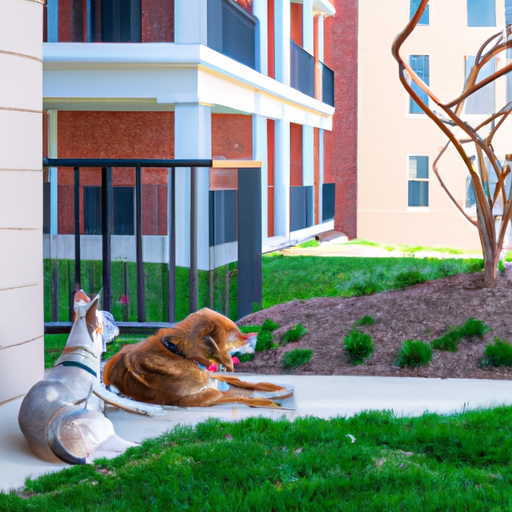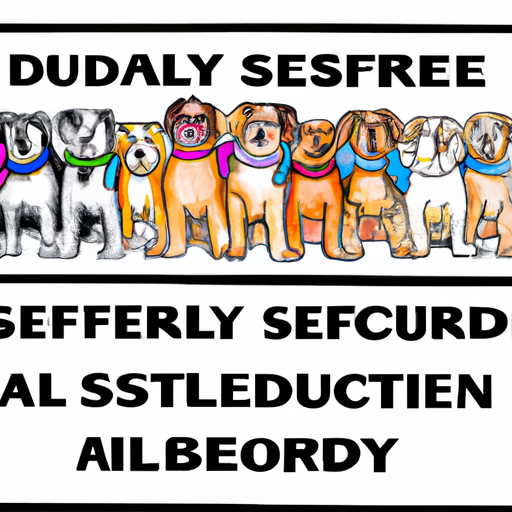This article discusses the importance of understanding apartment pet policies, including breed restrictions. It explores the reasons for these limitations, the controversies surrounding them, and alternative approaches. It also includes advice for pet owners who are struggling to find housing.
When it comes to finding the perfect apartment for you and your furry friend, it’s important to know the pet policies in place. One common restriction that many apartment buildings have is a breed restriction. These restrictions can often limit the types of breeds allowed, leaving pet owners with limited options. In this article, we’ll explore the impact of breed restrictions on apartment pet policies and discuss ways to navigate these restrictions. We’ll also delve into the controversy surrounding breed restrictions and explore alternatives to promoting responsible pet ownership. Whether you’re a pet owner looking for a new apartment or just interested in understanding the issue, this article will provide valuable insight into the world of apartment building breed restrictions.
- 1. Understanding apartment pet policies: the impact of breed restrictions
- 2. Navigating Breed Restrictions: What Pet Owners Need to Know
- 3. The dispute over breed restrictions in multi-apartment buildings
- 4. Alternatives to breed restrictions: promoting responsible pet ownership
- 5. Overcoming Breed Restrictions: Finding Pet Friendly Apartments for All Breeds
1. Understanding apartment pet policies: the impact of breed restrictions

Understanding pet policies: The impact of breed restrictions
When looking for a pet-friendly apartment, it’s important to read the apartment’s pet policy, including the breed restrictions they can have. Breed restrictions are rules that restrict or prohibit certain breeds of dogs from living in an apartment complex. Although these restrictions may seem arbitrary or unfair, they are often implemented with the intention of maintaining a safe and harmonious living environment for all residents.
The main reason for breed restrictions is the perception of certain dog breeds as more aggressive or dangerous than others. Some breeds have gained a negative reputation due to incidents or sensationalized media coverage, prompting landlords and property managers to introduce restrictions to reduce potential risks. The goal is to prevent dog-related accidents, such as bites or attacks, and to reduce property owner liability.
It is important to note that breed restrictions are not indicative of the behavior or temperament of each dog within that breed. Dogs, like people, have individual characteristics shaped by their upbringing
2. Navigating Breed Restrictions: What Pet Owners Need to Know

When it comes to apartment living, many pet owners struggle with breed restrictions imposed by property management companies. These restrictions often apply to certain dog breeds that are perceived as aggressive or dangerous. While breed restrictions may seem frustrating and unfair to some, it is important for pet owners to understand why these rules exist and how to effectively manage them.
First, it is important to recognize that breed restrictions exist primarily to ensure the safety and well-being of all residents of the housing complex. Some dog breeds have a reputation for being more aggressive or territorial. Property management companies enforce breed restrictions as a precautionary measure to reduce the risk of potential incidents and maintain a peaceful living environment.
Understanding the reason behind breed restrictions can help pet owners approach the situation with compassion and impartiality. It is important to remember that this policy is not intended to discriminate against responsible pet owners or foster animals. Instead, they aim to prevent any accidents that may occur due to the breed’s characteristics
3. The dispute over breed restrictions in multi-apartment buildings

Breed restrictions in apartment buildings have long been a subject of controversy and debate. These restrictions usually include a list of dog breeds that are considered “dangerous” or “aggressive” and are therefore prohibited from living in the building.
One of the main arguments against breed restrictions is that they unfairly target specific breeds and discriminate against responsible owners. Many experts claim that a dog’s behavior is primarily influenced by its upbringing and environment, not its breed. They believe that a focus on responsible ownership, proper training and socialization should be prioritized over blanket bans on certain breeds.
Additionally, breed restrictions can cause significant emotional stress for pet owners. Imagine having to give up a beloved family member simply because he belongs to a certain breed. For many people, their pets are part of the family, and losing them can be incredibly sad.
Another concern is that breed restrictions may perpetuate stereotypes and negative perceptions of certain breeds. These limitations often stigmatize breeds
4. Alternatives to breed restrictions: promoting responsible pet ownership

While breed restrictions may seem like a simple solution to reducing the potential risks associated with certain dog breeds, there are alternative approaches that can promote responsible pet ownership without discriminating against specific breeds. By focusing on responsible pet care, apartment communities can create a safe and harmonious environment for all residents and their pets.
One alternative to breed restrictions is the implementation of a comprehensive vetting process for pets. This process would evaluate individual dogs based on their behavior, temperament and training rather than relying solely on breed stereotypes. By evaluating the unique characteristics of each dog, apartment communities can ensure that only well-behaved and socially compatible pets are allowed on the premises.
Another alternative is to require all pet owners to provide proof of obedience training or certificates for their dogs. This can help ensure that dogs living in apartments are well-behaved, responsive to commands, and less prone to aggressive behavior. By mandating obedience training, apartment communities can create an environment where responsible pet ownership is encouraged and rewarded.
In addition, the implementation of a strict pet owner
5. Overcoming Breed Restrictions: Finding Pet Friendly Apartments for All Breeds

When looking for an apartment, pet owners often face the problem of breed restrictions. Many landlords and property management companies have policies that prohibit certain breeds of dogs from living on their property. These restrictions are mainly based on misconceptions and stereotypes about certain breeds, which leads to a frustrating and unfair situation for pet owners.
However, there are ways to get around these breed restrictions and find pet-friendly apartments that accept all breeds. Here are some tips to help you in your search:
1. Research apartments where pets are allowed. Start by doing your research and making a list of pet-friendly apartments in the area you want. Many apartment complexes now advertise themselves as pet-friendly, which means they will likely have flexible breed restrictions or no restrictions at all.
2. Use online resources: A variety of online platforms help pet owners find homes that accept all breeds. Websites such as Apartments.com, Rent.com, and Zillow allow you to filter your search for pet-friendly apartments, allowing you to find options that may be
In summary, apartment pet policies that include breed restrictions have a significant impact on pet owners and their ability to find suitable housing for their furry companions. Although breed restrictions are intended to mitigate potential risks and maintain a safe habitat, they often cause controversy and discrimination against certain breeds. However, there are alternatives to breed restrictions that can promote responsible pet ownership and ensure the safety and well-being of all residents. By implementing activities such as individual evaluations, behavior assessments, and owner education programs, apartment buildings can create a pet-friendly environment that accommodates all breeds. Ultimately, finding pet-friendly apartments for all breeds is not only possible, but necessary to promote inclusivity and maintain the connection between people and their beloved pets.
 Purex find
Purex find